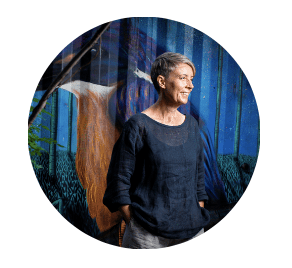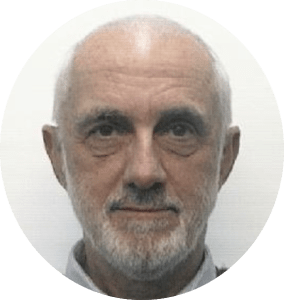Welcome to Re-thinking Diagnosis 2022
Outside of medicine, it is often assumed that the concept of medical diagnosis is unproblematic and well-understood. However, if we look at the idea of diagnosis more carefully, we see that it is both much less clear and more problematic than first assumed. The aim of this conference is to explore philosophical questions at the intersection of practical and conceptual issues of diagnosis.
All welcome!
Important Information
When: December 2nd 2022 – 9:00am – 6:00pm AEST
Where: The University of Wollongong, Building 20, Room 5
Mode: Hybrid: In-person & Online via Zoom
Registration
If you are interested in attending Re-thinking Diagnosis 2022 either in-person or online, please complete the registration form below. If you have any questions or concerns please email Danielle at dmon858@uowmail.edu.au.
https://forms.gle/eoAKiniufB7K4v2fN9
Registration for in-person attendance closes: November 24th 2022
Schedule
All times are Australian Eastern Standard Time.
| 9:00 am | Conference opening & Welcome |
| 9:05 am | Hane Maung Diagnostic Redundancy: The Case of Gender Incongruence |
| 10:00 am | Morning Tea |
| 10:30 am | Annemarie Jutel The Sociology of Diagnosis |
| 11:30 am | Gemma Lucy Smart Narratives of Mental Distress and Spirituality in late 20th Century Australia |
| 12:30 pm | Lunch Break |
| 1:30 pm | Stephen Rosenman Taking my grandfather’s axe to Dx |
| 2:00 pm |
Danielle O’Neill Re-thinking Diagnosis of Chronic Illnesses |
| 2:30 pm | Stacy Carter Rethinking diagnosis and overdiagnosis |
| 3:30 pm | Afternoon Tea |
| 4:00 pm | Yves Saint James Aquino Explanation vs Outcome: Examining progessional perspectives on trustworthiness of Artificial Intelligence for Diagnosis |
| 5:00 pm | Nicholas Binney Philosophy of sensitivity and specificity |
| 6:00 pm | Conference Close |
Abstracts
 |
Annemarie Jutel (Victoria University of Wellington) Title: The Sociology of Diagnosis Abstract: Diagnosis is a complex classification system which shapes the work of medicine, and the experiences of health, illness and disease. This talk will explore the social overlay that diagnosis affixes to the material realities of disease. From the conceptual development of the disease category, to the moment it is “assigned” (or not) to the sick person, the social consequences of diagnosis are considerable. We will discuss how diagnosis becomes a source of power, a way of allocating resources, a legitimising or a stigmatising moment, and a creative trope. |
 |
Danielle O’Neill (University of Wollongong) Title: Re-thinking Diagnosis of Chronic Illnesses Abstract: Chronic illnesses affect approximately half of Australians and make up the largest proportion of diseases affected by problems such as underdiagnosis and overdiagnosis. Chronic illnesses are particularly suspectable to these problems since the standard view of diagnosis focuses on disease identification: many chronic illnesses are difficult to identify as we do not have the necessary diagnostic tools, tests or understanding to do so. In this talk, I assess three possible responses to the problem of diagnosis in cases of chronic illness: (i) abandoning the idea of disease identification entirely; (ii) maintaining the focus on disease identification, while incorporating pragmatic fixes in cases where identification fails; and (iii) develop a new way to diagnose chronic illnesses that address the problem of disease identification. |
 |
Gemma Lucy Smart (University of Sydney) Title: Narratives of Mental Distress and Spirituality in late 20th Century Australia Abstract: Questioning the validity of biomedical psychiatric diagnoses was emblematic of the rise of the anti-psychiatry and critical psychology in Australia during the 1960s and 1970s.This questioning provoked widespread destabilisation and sometimes changes in the understanding of mental distress, notably with the movement of mental health services out of mental hospital settings into a myriad of community-based settings. The period saw the rise of several counter-culture movements including new religious and spiritual groups. Some of these movements did, and continue to, provide official and unofficial care of mentally distressed individuals, and alternative narratives for understanding atypical experiences that did not rely on traditional diagnostic categories. Narratives are a tool for understanding ourselves. Most often they are employed without their potential consequences in mind, positive or negative. Nyquist Potter (2011) argues that master narratives shape all aspects of human life – interpretation, causality, responsibility, and future expectations. They carry values and can negatively distort the identities of those members of society that do not easily fit into the dominant narrative story. Counter to master narratives, alternative narratives destabilise dominant ones, providing a safe haven for those who experience the world in atypical ways, or those that do not find master narratives congenial to their experience. In this paper I analyse interviews and archival material collected as part of the Re;Minding Histories group at the University of Sydney that explore the experiences of consumers of mental health care in community settings in the late 20th century.I will focus ontheir encounters with the available alternative spiritual narratives, specifically those that provided alternative explanations for their experiences. I ask whether these alternative narratives served as pragmatically useful for those individuals and consider how the role of these alternative narratives should affect how we can understand the value or harm(s) of traditional medical diagnosis, arguing for a pluralistic and inclusive approach to mental health. |
 |
Hane Maung (Lancaster University) Title: Diagnostic Redundancy: The Case of Gender Incongruence Abstract: Diagnoses serve a variety of clinical purposes, which include informing predictions, guiding interventions, and mobilising resources. Such diverse purposes are often underpinned by the explanatory and normative roles of the diagnoses. A diagnosis usually (1) provides a causal explanation of a person’s situation and (2) conveys the normative judgement that the person’s situation is pathological. This paper offers a philosophical critique of the diagnosis of gender incongruence in view of the aforementioned roles. Under the dominant model of healthcare used in the present day, a formal diagnosis of gender incongruence is usually required in order for a person to access gender affirming healthcare. However, the diagnosis of gender incongruence neither provides a causal explanation of the person’s situation, nor conveys the normative judgement that the person’s situation is pathological. This suggests that the role of the diagnosis of gender dysphoria is largely bureaucratic, which raises the concern about its use in the harmful gatekeeping of gender affirming healthcare. I finish by considering an alternative model of healthcare that is not centred around the diagnosis of pathology, but is aimed at facilitating people’s abilities to achieve their embodiment goals. |
 |
Nicholas Binney (Max Planck Institute for the History of Science) Title: Philosophy of sensitivity and specificity Abstract: Physicians use medical tests and other observations to make diagnoses and other decisions about how to assist the patients in their care. Traditionally, the evaluation of diagnostic tests has been focused on assessing diagnostic accuracy using indices such a sensitivity (the percentage of patients with a disease who test positive) and specificity (the percentage of patients without a disease who test negative). Sensitivity and specificity are used along with the prevalence of a disease to calculate the probability that a disease is present, which is useful information when making a diagnosis. Sensitivity and specificity have for many years been assumed to be fixed properties of a test. Today, many researchers disagree, arguing that sensitivity and specificity are highly context dependent. Furthermore, it has also been traditionally assumed that a test that is not accurate cannot be useful. Again, others disagree, and even suggest that the “paradigm of diagnostic accuracy should be abandoned”. I argue that these differing attitudes to sensitivity, specificity and diagnostic accuracy are tightly connected to ontological assumptions about the nature of diseases. The beliefs that sensitivity and specificity are fixed, and that tests cannot be useful unless they are accurate, are connected to the ontological belief that patients with the same disease are highly homogeneous. The beliefs that sensitivity and specificity are not fixed, and that tests can be useful even though (or perhaps because) they are not accurate, are connected to the ontological belief that patients with the same disease are highly heterogeneous. Assumptions about the existence of homogeneous disease entities are related to the aetiological disease entity model, popular around the turn of the twentieth century when the sensitivity and specificity of serological tests were first assessed. The assumption of homogeneity was prominent in medical test evaluation for much of the twentieth century, but in the last few decades the heterogeneity of patients with the same disease is more commonly recognized. Consequently, how doctors understand sensitivity, specificity and diagnostic accuracy is in the process of changing. This has left contemporary test evaluation in a difficult position, with many conflicting ideas and practices all jumbled together. I argue that careful philosophical and historical reflection can help untangle this contemporary situation, and help doctors evaluate and use medical tests more effectively. |
 |
Stacy Carter (University of Wollongong) Title: Rethinking diagnosis and overdiagnosis Abstract: In this paper I reflect on a decade of research and advocacy about overdiagnosis, and some implications for rethinking both diagnosis and overdiagnosis. Overdiagnosis is a pattern observed in epidemiological data, a problem for healthcare professionals and patients, a concept analysed in the philosophy of medicine, and an outcome of practices in sociotechnical healthcare systems. Its definition, estimation and normative significance are not yet settled, despite extensive research. In this paper I propose two ways that work on overdiagnosis might help inform thinking about diagnosis. First, a detailed understanding of overdiagnosis appears to encourage hybrid approaches to the conceptualisation of disease and thus diagnosis. Second, common objections to the existence and/or the normative significance of overdiagnosis tend to implicitly reject this hybrid understanding. In particular, disagreements over overdiagnosis frequently turn on whether a hard distinction can be made between diagnosis on the one hand, and its context and consequences on the other. I conclude that, although contests about overdiagnosis remain open, the concept offers an ongoing provocation to thinking about diagnostic practices and their normative implications |
 |
Stephen Rosenman (University of Wollongong) Title: Taking my grandfather’s axe to Dx Abstract: Diagnostic judgments in psychiatry are often presented as if they are based upon stable, objective features inherent in a patient. However, this misrepresents the nature of diagnostic categories and their underlying criteria. Like the caput nili, these emerge from the landscape of history and usage without a clear origin or singular reference or fundamental ontology. Classificatory terms do not refer simply to what is inherent in the phenomena. They are judgements, not discoveries. That does not mean they are necessarily vague or unreliable, only that they are fluid and adapt to the context and conditions and the purposes for which those judgements are made. And it does not mean that a diagnostic category is useless, simply that it is not useful for everything in psychiatry. In this paper, I will sketch three alternative models for understanding the various natures of diagnostic categories in psychiatry and their implications. |
 |
Yves Saint James Aquino (University of Wollongong) Title: Explanation vs Outcome: Examining progessional perspectives on trustworthiness of Artificial Intelligence for Diagnosis Abstract: Research on healthcare applications of machine learning (ML), a type of artificial intelligence (AI), has proliferated across clinical processes such as diagnosis and screening of diseases, allocation of healthcare resources, and developing personalised treatments. Given the increasingly complex processes behind ML systems, explainability has been considered a major caveat to its adoption in healthcare. This presentation reports the preliminary findings of a qualitative investigation of the perspectives of professional stakeholders (e.g. clinicians, data scientists, entrepreneurs and regulators) working on ML algorithms in diagnosis and screening. All participants were unified on the qualities that diagnosis should have: diagnosis should proceed in a way that enabled human oversight, promote critical thinking among clinicians, and ensure patient safety. However participants were divided on whether explanation was an important means to achieve this end. Broadly, some participants proposed ‘Outcome-assured’ diagnostic practices, while others proposed ‘Explanation-assured’ diagnostic practices, a distinction that applied either with or without the use of AI. ‘Outcome assured’ and ‘Explanation assured’ approaches differed in the significance attributed to explanation in part because they conceptualised explanation differently, not just in relation to what explanation is, but also in relation to the level of explanation and who might be owed an explanation. |